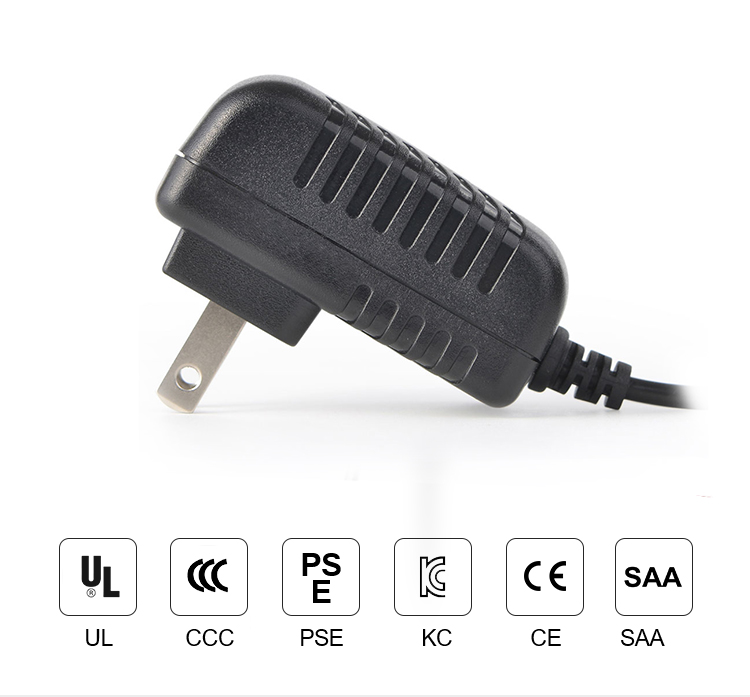AR/VR technology is the fourth wave of consumer technology, and AR may be more powerful than VR.
According to a recent report released by Digi-Capital, AR (including mobile AR, smart glasses) can reach 3.5 billion installation base and 85 billion to 90 billion US dollars in revenue within 5 years. At the same time, VR (including mobile, stand-alone, manipulative, PC) may provide a 50-60 million installation base and $10 billion to $15 billion in revenue. This is a big difference, which is related to the universality of AR and the focus of VR.
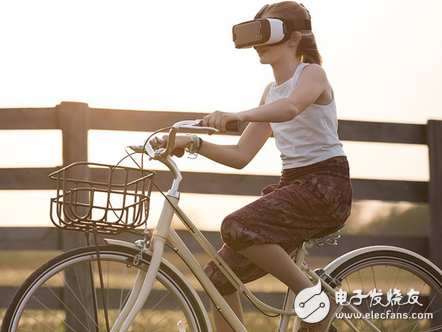
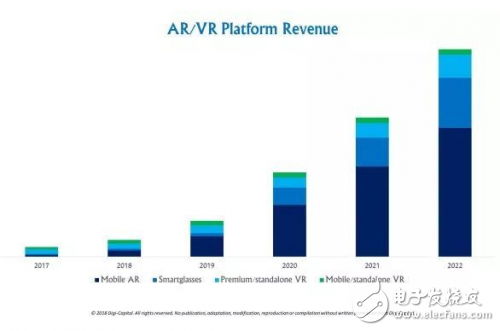
(Note: The basic situation of Digi-Capital is that although the installed base of AR Kit/AR Core is 900 million by the end of this year, the revenue of AR/VR business will not start to grow until 2019)
To understand why the development of the two markets is so different, we will have an in-depth understanding of AR and VR installation bases, use cases, revenue from application store categories (IAP/premium), sales in e-commerce categories, industrial advertising expenditures, corporate revenues and geographies. distributed. The details are important, and this is the most detailed in-depth analysis we have ever done.
All related to the cardinal numberMobile AR (Apple ARKit, Google ARCore, Facebook Camera Effects, Snap Lens Studio) will reach 900 million installations by the end of this year and will reach 3.5 billion by 2022, leading augmented reality/virtual in the foreseeable future reality. However, despite the emergence of the mobile version of AR as a competitor platform last year, the market potential of VR has been weakened, but the "VR cycle is dead" argument may be a bit harsh.
As mobile phone manufacturers and developers shift their focus to mobile AR, the potential of mobile/standalone VR devices (Samsung Gear VR, Google Daydream View, Oculus Go) is weakening and may not be long-term Based on the tens of millions of installation bases. (Note: The hardware installation base includes hardware data and device consumption for device sales.)
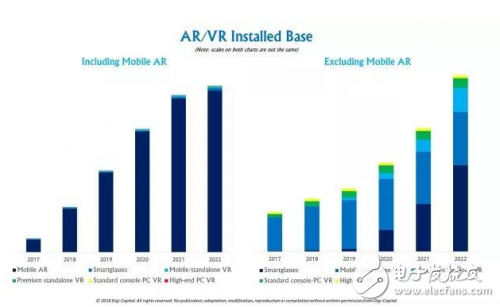
With hardware/software development and price declines, Standalone premium VR (both PC and mobile devices such as HTC Vive Focus and Oculus Santa Cruz prototype) may accelerate growth in 2019/2020, but by 2022, it is possible Only about half of the mobile/standalone VR installations. Console/PC VR (HTC Vive, Oculus Rift, Microsoft Windows Mixed Reality, Sony PlayStaTIon VR) may grow from the current low value of millions, but may only reach a higher value of millions in five years the amount.
Smart glasses (Magic Leap, Microsoft HoloLens, ODG, Meta, Vuzix) remain a long-term prospect for augmented reality/virtual reality technology. If Apple introduces smartphone-tethered smartglasses in 2020, the smart glasses market may grow from hundreds of thousands of corporate users last year to tens of millions of consumers in 2022.
All in all, the market for integrated AR/VR headsets will reach tens of millions of installed bases (about 3% of mobile ARs) by 2022.
Source of incomeMobile AR applications were primarily ports from existing platforms in the first few months, but the scale, flexibility, mobility and ubiquity of AR are driving the explosive growth of new use cases and business models. E-commerce sales (goods and services, not IAP) may be the largest source of revenue for AR, and Houzz has proven that mobile AR can increase sales conversions by 11 times, while Alibaba has partnered with Starbucks to establish the world's largest in Shanghai. AR Coffee Shop (Alibaba is a major investor in Magic Leap).
If Apple releases mobile-connected smart glasses, hardware sales may become AR's second-largest source of revenue. Next is advertising spending, followed by app store revenue, revenue from different types of new non-game "IAP/premium", and a more familiar game business model. For today's enterprise-centric smart glasses and mobile augmented reality, Enterprise AR may be significant for future growth. Finally, locaTIon-based AR entertainment can achieve long-term growth.
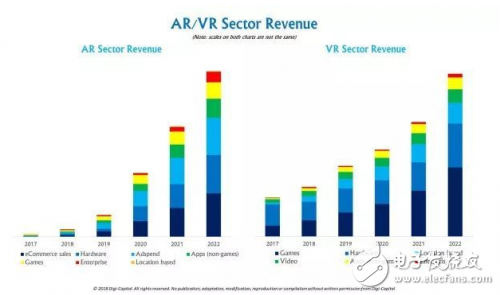
The VR installation base is smaller, less mobile, and fully immersive (that is, limited diversity), which focuses on entertainment use cases and revenue streams. Entertainment (games, location-based entertainment, and video) may account for two-thirds of all virtual reality revenues for a long time, and hardware revenues account for only a quarter due to equipment sales and price competition.
Enterprise use cases will have, but the relatively low installation base and form factors of virtual reality may be much lower than the corporate spending of the same enterprise mobile AR and smart glasses. Virtual reality e-commerce and advertising revenues may grow, but the size and fragmentation of the VR user base will limit their current importance.
Diversity is the driving force for progressThe difference between the two markets became more apparent when viewing the 23 App Store Revenue (IAP/premium) categories.
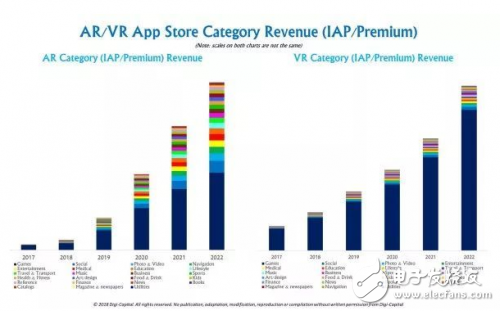
Although AR games may account for more than two-thirds of the app store revenue this year (other categories of revenue do not exceed a few percent), but with the developer's creativity and venture capital investment, by 2022, more than 20 The non-gaming industry will account for more than half of the app store revenue. The game is still important, but the biggest innovations and growth may come from society, navigation and other areas. New use cases may lead to new business models that disrupt old and new industries.
In contrast, the game will occupy the revenue share of the VR app store for a long time. VR technology looks more like a subset of the video game market, where it has been heavily marketed to the player's user base.
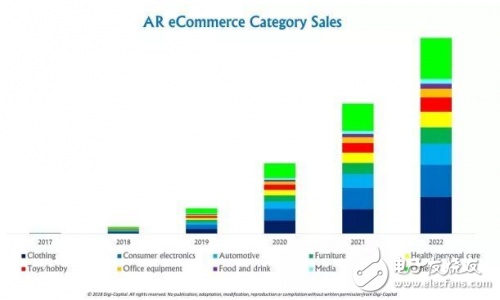
As mentioned above, emerging AR e-commerce has proven its value to market leaders. But this potential far exceeds lifestyle retailers like Houzz. The largest AR e-commerce sales may come from apparel, consumer electronics, automotive, furniture, health/personal care, toys/hobbies, office equipment, food/beverage and media categories. While new players will take advantage of the AR potential of e-commerce, e-commerce giants like Amazon, eBay and Alibaba can get the most out of the more immersive AR sales technology.
For Facebook (Messenger, WhatsApp, Instagram), Snap ( Snapchat, Bitmoji), Tencent (WeChat, QQ) and other social / messaging platforms, the huge installed base of mobile AR may be a boon. Snap's "Dancing Hotdog" pointed out that the company's advertising direction, while mobile advertising on Facebook's mobile advertising spending accounted for 88% of total advertising spending, which means that Mark Zuckerberg's camera effects platform will exist for a long time.
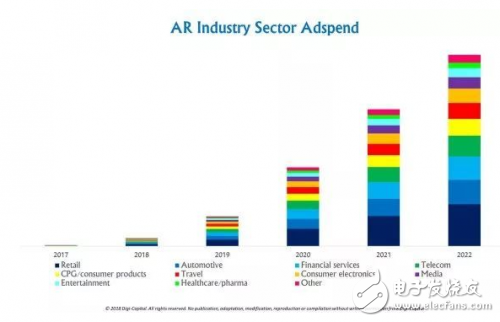
Major brands may need to take the time to fully understand the potential of mobile AR, but when they do, they expect to see retail, automotive, financial services, telecommunications, CPG/consumer products, travel, consumer electronics, media Large advertising expenditures for entertainment, medical and medical advertisers.
Operating businessAs enterprise users get ROI from cost savings to allow them to invest in pilot projects, smart glasses have become the focus of attention. Companies such as Microsoft, ODG, Meta, and Vuzix have seen early growth in the enterprise, even though the enterprise smart glasses market is still in its early stages.
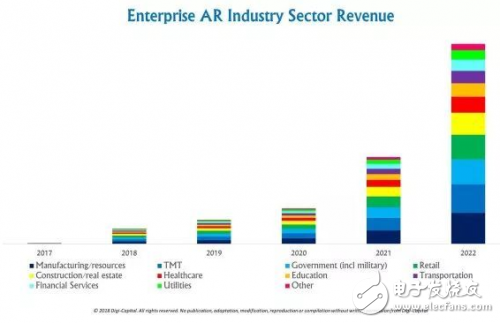
The popularity and low cost of mobile AR can also help enterprise AR start to be used this year. With the advent of a new generation of smart glasses, the growth of enterprise AR will grow steadily until around 2021, at the turning point, in production/resources, TMT, government (including military), retail, construction/real estate, healthcare, education, transportation. , financial services and utilities.
Asian era
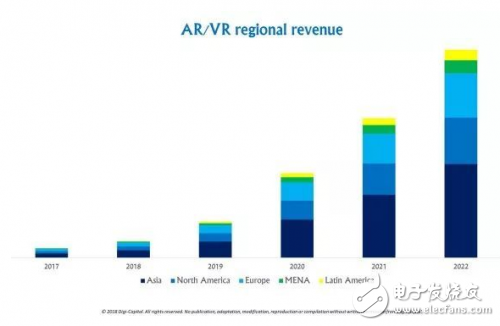
Since the geographic distribution of mobile AR is very similar to the current distribution of smartphones/tablets, and the distribution of virtual reality is roughly similar to the market distribution of current games, Augmented Reality/Virtual Reality revenue may be used in Asia (especially China, Japan, and South Korea) led. This may make Asia's size roughly equal to that of North America and Europe. As the early consumer revenues of smart glasses may come from mobile tethered smartglasses, their revenues may follow a similar geographic landscape.
If VR is combined with games, then AR has a broader future.Since 2015, we have said that Apple can build your augmented reality future, and Cook seems to agree with this. "The impact of AR is far-reaching. Not just now, not the application you see on the App Store today. But what it will be. The real meaning is that AR is the mainstream. Apple is the only company that can bring this function because it requires hardware/software integration... much like we fired in the App Store in 2008 This is my feeling, I think it will have more development from here."
We also believe that AR/VR technology is the fourth wave of consumer technology, and AR may be more powerful than VR. This seems to be a development trend, but we are only at the beginning - 2018 is not "year of AR / VR". Surfers know that driving waves is not without risk, but when you do it right, there is nothing better. So for patience and courage, this will be a crazy journey.
24v wall charger,24v dc adapter,24v ac dc adapter,24v switching adapter,100-240V AC to DC 24V 3A 72W Power Adapter,12W Ac Switching Power Adapter,24V 0.5A Power Supply For Led Lights
Shenzhen Waweis Technology Co., Ltd. , https://www.huaweishiadapter.com
